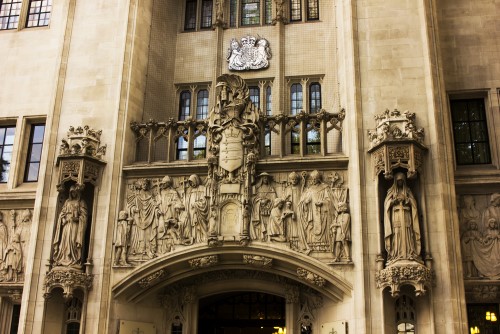Can you investigate non-employees?
Insight

When an investigation is needed in a workplace, the process usually falls squarely into HR process and procedure: for example, a manager is accused of bullying a junior employee or allegations of sexual misconduct emerge between two employees at a party. Usually, everyone involved has an employment contract, has signed up to the employee code of conduct and is covered by the grievance and disciplinary procedures.
However, it is not always so straight forward.
When the most senior employee raises concerns about their line managers, this can involve paid non-executive board directors or voluntary members of a board of trustees. Parties can be attended by contractors, for example, who behave - or are treated – badly. Some organisations are set up for the purpose of non-employees who outnumber employees considerably such as pupils in schools, students in higher education, members of sports bodies or certain groups of the public for charities.
This can throw up a number of practical issues which organisations should address at the outset of any investigation process:
Who “owns” the process ?
HR usually has the most experience in dealing with investigations into misconduct or poor performance type issues, but they may not be responsible for non-employees such as a student body, the non-executive directors, trustees, members or charitable beneficiaries. It is important to identify who in the organisation has and then make sure that the right people are speaking to each other. In the worst case scenario, two separate processes might start without one knowing about the other.
What contractual documents and policies are relevant?
Once you have identified who will run the process, this doesn’t mean that that team / department’s policies should automatically be used. For example, HR might have the most experience so be responsible for managing a process that involves a trustee or a student. This does not mean that the employee handbook should be used. Be clear about who is the focus of the process. Who raised the grievance? Who is potentially subject to disciplinary action? Then look at their relationship with the organisation and how this is documented. There will almost certainly be some form of contractual document and they may well be covered by the same or a similar code of conduct as employees. Gather all these together. For more on what to do – and what not to do – to get your investigation off to a good start, we have produced a podcast on Key points to consider when conducting a workplace investigation.
Think about potential outcomes
What are the potential outcomes of this investigation. If you have found that a director has bullied someone, what might this lead to? If you might want them to leave the organisation, what is the process for this and who might need to make these decisions? Factor this into your decision-making process. For more on deciding the outcome of an investigation, see our Workplace Investigations blog series – What is the correct standard of proof and Getting the report right.
Consider basic principles of natural justice
It may be that the documents you have are useful but don’t set out an agreed or expected process to deal with the people you need to investigate. This does not mean that “anything goes”. When someone is accused of something which could seriously damage their reputation, current or future carer or their progression within your organisation or sector, you have to take any process which makes findings of fact about their actions seriously. While employee processes should not be used wholesale, they have been carefully written by statutory authorities to ensure fairness and natural justice. Consider principles such as:
- Allowing them the chance to defend themselves against the specific allegations before a decision is taken.
- Telling them who has accused them so they can give a full defence and context.
- Allowing them a companion to support them during any meeting or hearing.
- Allowing a right of appeal.
Use best practice and experience in your organisation
Someone in your organisation will have some experience of these issues even if they are not in the department which is ultimately chosen to be responsible for the process. Don’t reinvent the wheel if you don’t need to.
Consider particular vulnerabilities
You may be more likely to have participants in an investigation process who have specific needs to be taken into account, such as more vulnerable witnesses. For more information, see our articles on Achieving best evidence from witnesses in investigations and Important considerations when interviewing neurodivergent employees.
As you can see, there is nothing fundamentally different to an investigation involving non-employees and many of the same principles apply. However, it does take a bit of planning to ensure you have thought through the relevant processes, internal stakeholder planning and potential outcomes.
This publication is a general summary of the law. It should not replace legal advice tailored to your specific circumstances.
© Farrer & Co LLP, May 2023







